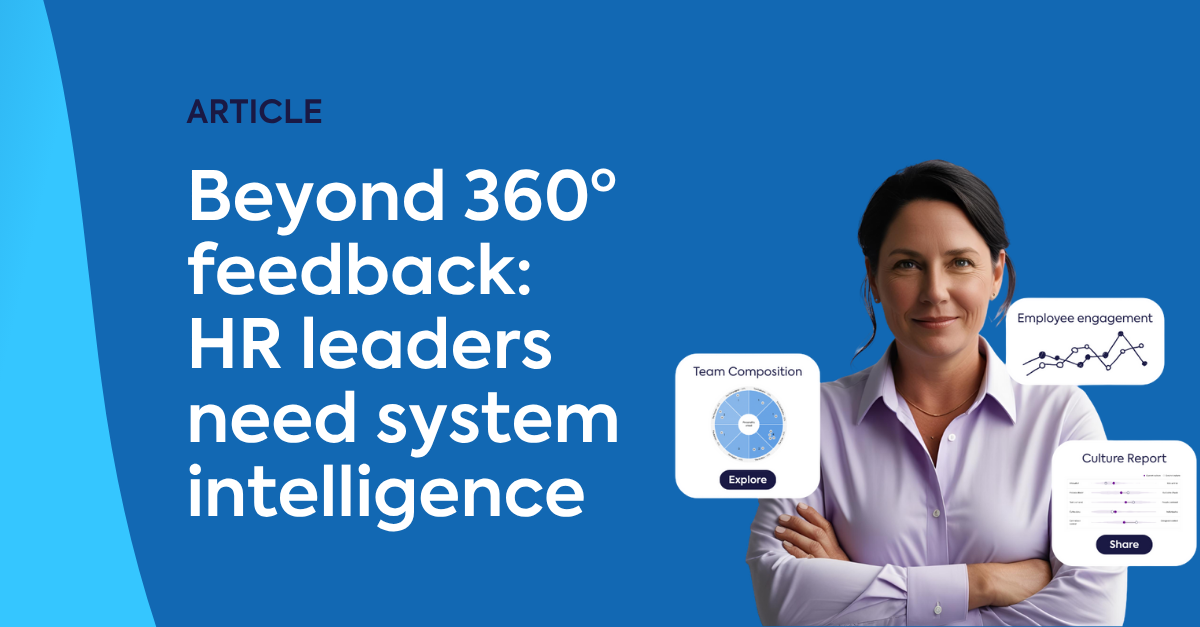Unlocking the Power of Alignment: A Revolutionary Approach to Organisational Success
Misalignment. It’s a word that sends shivers down the spine of business leaders everywhere. When employees and organisations aren’t on the same...
Become the expert on delivering
valid and fair assessments for
your training and education.
Hire
|
Engage
|
Develop
|
|
Automatically match to candidates who are a great fit for your team culture and who are intrinsically motivated to succeed. |
Deeply understand your organisation with science-backed analytics on your culture, team design, and engagement. |
Back your onboarding, compliance and skill development with industry-leading credentialling, competency and capability expertise.
|
Hey Compono helps you understand your personality and how to turn it into your superpower.
First 1,000 users get 10 minutes free.
Just $15 a month after that — cancel anytime.
.jpg)
We have known for decades that engaged employees are more productive. Research shows that employees that are most committed to their organisations put in 57% more effort and are 87% less likely to leave than employees who said they were disengaged.
The next question would be, how many employees are actually committed to their organisations? Well, the truth is that 85% of your employees may not be fully engaged at work. As staggering as the number is, it also shines light on the importance of getting workforce engagement just right.
The good news is that companies have seen improvements in engagement during the COVID-19 pandemic as this radical situation has forced leaders to focus more on listening to their employees. However, better engagement is not achieved overnight and once-and-for-all. So how can leaders maintain this level of engagement as this new way of working becomes the norm?
To create an engaged workforce, you need to provide a great employee experience. This is the staff’s overall perception of how they are being treated by the organisation on a day-to-day basis. An employee experience is an end-to-end process. Wherever an employee is at on their employee lifecycle, we need to ensure we meet their needs, starting with a few simple questions:
“How do we treat our candidates prior to them joining us?
How good are we at onboarding them?
Are we effective at creating great team performance?
Do we build on people’s strengths?
Do we ask for constructive feedback so that we can improve?”
The employee experience covers much more than most HR-driven activities such as policies, procedures, and processes. It's holistic and includes areas like:
“Employee engagement is the outcome measure of your employees’ experience."
By thinking about their people in this way businesses can reap positive performance improvement. There are six keyways to improve your team's experience and engagement:
People no longer want to be treated like just another number or resource at work. As with other parts of their life, they want custom-made solutions to suit their wants and needs. They want a personalised approach from the organisation as it seeks to get the best from them. They also want consumer grade experiences at work. These expectations require businesses to think about their people from a design perspective to create better experiences.
While people used to think about their job in terms of monetary value, nowadays people want flexibility, autonomy, and learning opportunities (along with good pay and benefits). Another critical factor is that people are much more concerned about the organisation’s integrity, ethics, and behaviour. We have at least five generations in the workforce at present. Both millennials and generation Z want their demands to be met quickly. They shop around for jobs more than previous generations using this much wider criteria when making decisions on where they work.
Businesses today engage many people who are not the conventional 9-5 employees. Most organisations use part timers, freelancers, and contractors to some extent. People that choose to work under a non-full-time contract are becoming more strategically critical to business performance. Your flexible workforce needs to have their experiences managed in a similar way to your permanent employees because their productivity is just as important in the quest to maximise organisational performance.
Your people expect to have the right tools and systems to be able to do their work effectively. They also expect user-friendly, self-service tools from your people systems. Technology can also provide you with analytics about your people and enable you to predict issues before they arise. IBM recently said they could predict with 95% accuracy who will leave their job.
One of the most critical factors in a great employee experience is an employee's relationship with their manager. Can the manager inspire and provide them with opportunities to grow and develop? Can they coach and provide practical strength-based feedback? Managers who are good communicators and listeners are fundamental to your people’s experience at work.
The key for any leader is clear engagement metrics, or consistent data on how engaged your people are. A yearly survey is not frequent enough to allow you to uncover trends and patterns and make interventions. The organisations that consistently get this right measure at least every 3 months and dig down to the most granular level without compromising anonymity. This enables those business leaders to identify where people are the least engaged and explore with local leaders what they need to do differently.
The future belongs to the organisations who can design and execute great employee experiences. A design-thinking approach can help businesses better position themselves in designing their people strategy. The rising importance of talent and the ongoing demand for human-centric performance improvement means that employee experience and engagement will become ever more crucial in the next decade.
Reference: Kevin Green (Author of best selling book “Competitive People Strategy”. Kevin is the Ex CEO of the Recruitment and Employment Confederation and HR Director at Royal Mail PLC)

Misalignment. It’s a word that sends shivers down the spine of business leaders everywhere. When employees and organisations aren’t on the same...

If you're researching 360 degree feedback software, you already know the basics. Multiple raters assess an individual. Anonymous surveys collect...

Every organisation has a workplace culture—the question is whether it’s working for you or against you. Workplace culture is often referred to as...